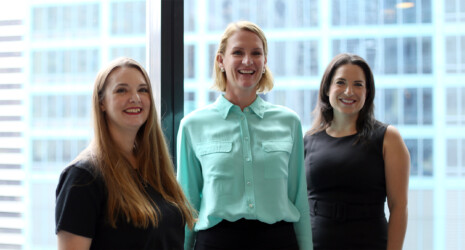
500 Women in Property
DesignInc Sydney is proud that three members of our team—Rachel Faber, Jennifer Forbes and Miriam Enoch—have been accepted into the ‘500 Women in Property’ 2023 program run by the Property Council of Australia (PCA).
DesignInc Associate Miriam Enoch wears many hats. As well as being a talented Landscape Architect, she is Vice President of the NSW Chapter of the Australian Institute of Landscape Architects (AILA) and mother of three young girls. We spoke with Miriam about her journey so far, her various roles, her favourite project, and the realities of juggling a range of commitments.
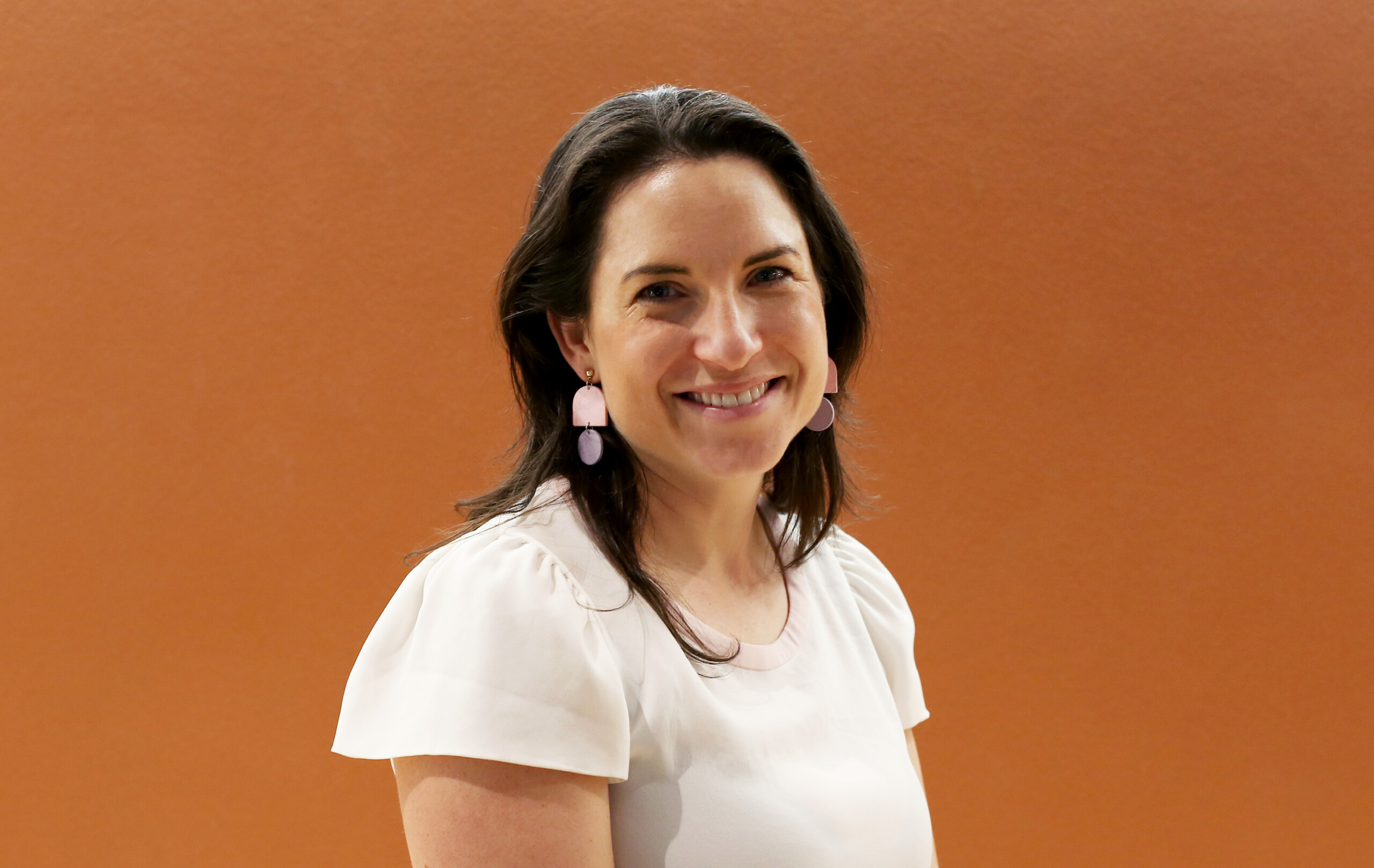
Good morning Miriam, thank you for taking the time to chat with me today. Let’s start at the beginning, why did you become a Landscape Architect?
For me it started at high school. In Year 10 I was interested in the design sector so did a work experience placement with Sam Marshall Architects. I really enjoyed it, so I studied ‘Design and Technology’ for the Higher School Certificate. For my major work I designed and built a water feature, which is where I started to become interested in the coming together of the natural and the built environments.
For my major work I designed and built a water feature, which is where I started to become interested in the coming together of the natural and the built environments.
Miriam Enoch, Associate
After school I enrolled in a Bachelor of Landscape Architecture degree at the University of NSW. It was a challenging degree—four years—but I enjoyed it. We were taught a range of subjects including botany, design and history, and like any study once out in the real world working you use slightly different skills.
In the final year of my degree I worked at a garden centre as well as part time at Context Landscape Design. Once I graduated I was offered a full time role. This was my first real job and I learned so much from the then Director Oi Choong. When I started I was helping in small ways, doing markups or creating plant pallettes, by the time I left close to five years later I was helping to run bigger projects!
And what happened after that?
I wanted to broaden my horizons, see what it is like at a larger organisation with bigger projects, so I moved to HBO+EMTB. I worked on predominantly infrastructure projects, such as the first light rail in Sydney (the Inner West line), as well as major roads projects such as Hunter Expressway and Westconnex. I enjoyed working there, but in 2015 the organisation folded. A group of us (Mary Anne McGirr, Megan Walker, Fiona Robertson and Mark Stolz) ended up coming across to DesignInc, we were able to novate some of our current projects and bring them with us. Eight years later we’re all still here!
That’s so interesting, I didn’t realise that part of the DesignInc story.
Yes, when I started at DesignInc in 2015 I was the only Landscape Architect in the organisation. It was a great opportunity, but also a bit daunting. About eight months later the company brought on Mark Stolz as a Principal, whom I had worked with previously at HBO+EMTB. Mark has been a fantastic mentor over the past 13 years.
Our landscape team has now expanded to 15 people! It’s pretty cool to have been a part of the team that has seen such growth over last eight years.
Absolutely. What have been the highlights in terms of projects?
A project that is close to my heart is Byron Bay Transport Interchange, which has won multiple awards. Our landscape team worked closely with the DesignInc urban design and architecture teams, and we also consulted with the local community, including representatives of the Arakwal People of Byron Bay. The result is a place which is not only a functional piece of public infrastructure—a bus stop—it is a place that the community loves, a destination, somewhere that people want to be. As a designer, knowing that you have delivered something that is meaningful for the local community is what it’s all about.
As a designer, knowing that you have delivered something that is meaningful for the local community is what it’s all about.
Miriam Enoch, Associate
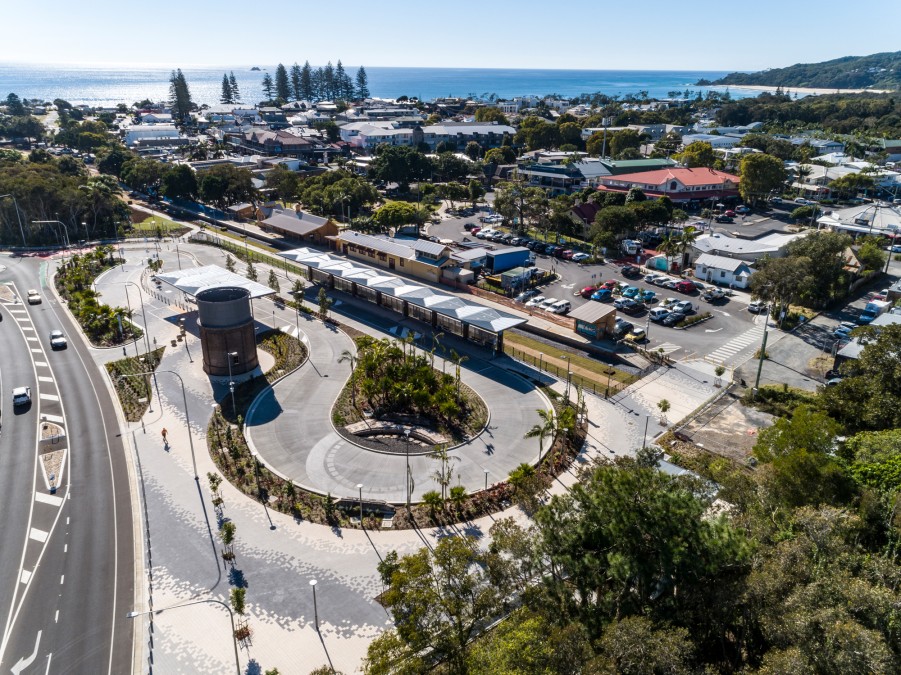
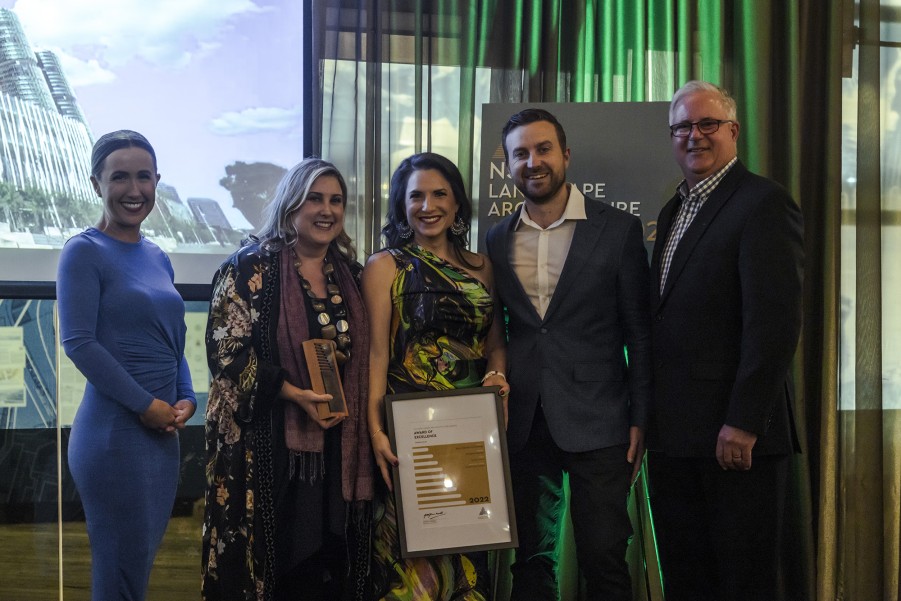
What are some of the landscape features of Byron Bay interchange that you love?
We integrated a range of Water Saving Urban Design (WSUD) strategies to capture water and retain hydrology in the landscape. We specified a ‘strata vaults’ for bigger trees, which allows soil to remain uncompacted, and minimises the impacts of roots at surface level so there is no paver uplift. I met with a representative of the local Bundjalung community through National Parks and Wildlife Service (NPWS) to get advice on the plant selection, and adjusted the plantings as a result. We included more species that are endemic to the area that are suitable for the microclimate and will not require much external maintenance.
The major constraint of the project but also the highlight was the heritage listed Water Tower which was still standing from the original locomotive train days. The interchange was designed around the water tower and squeezed between it and the old rail lines which has to be kept in-tact just in case the rail line is ever reinstated. The Water Tower was carefully restored back to its former glory.
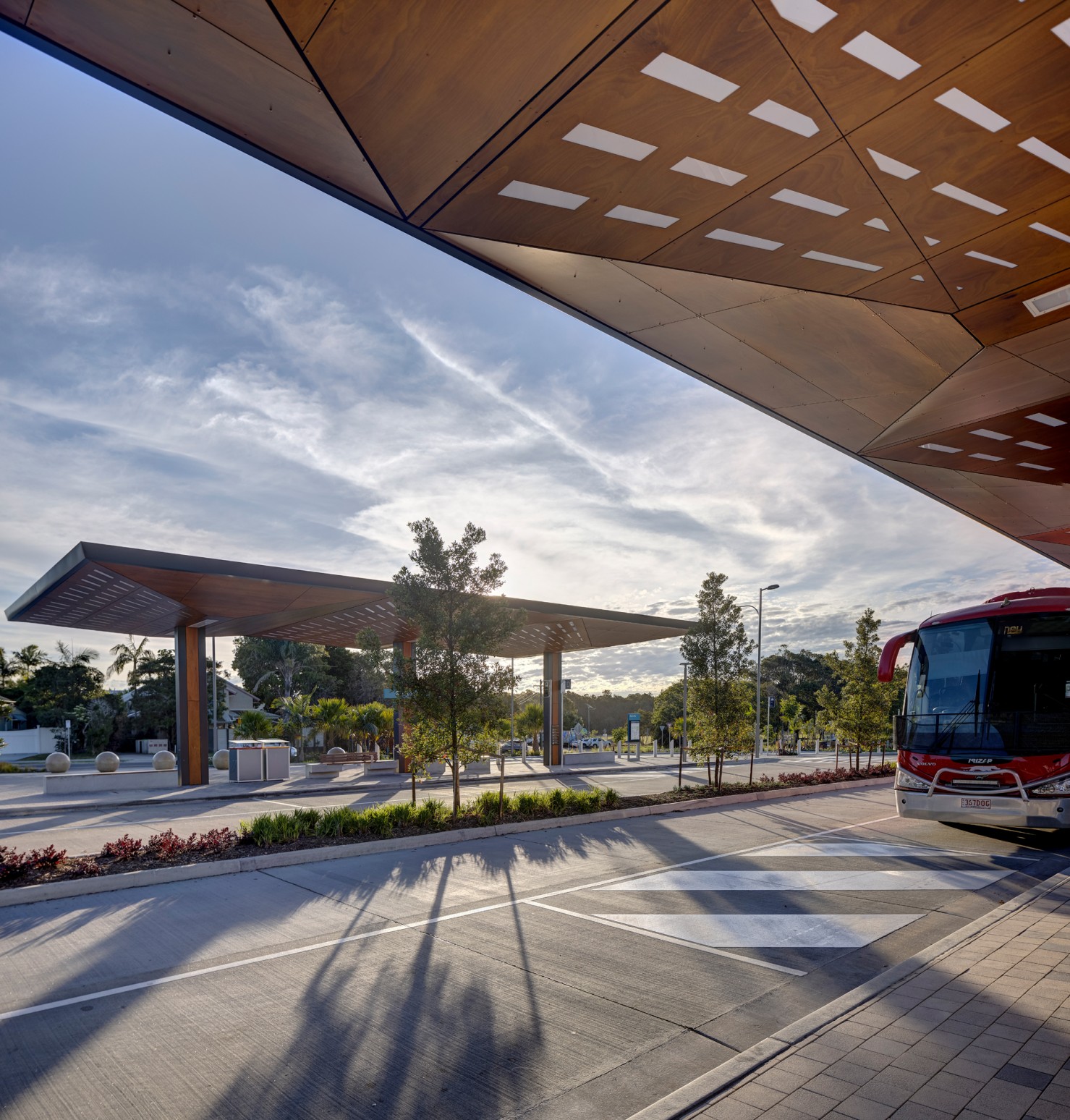
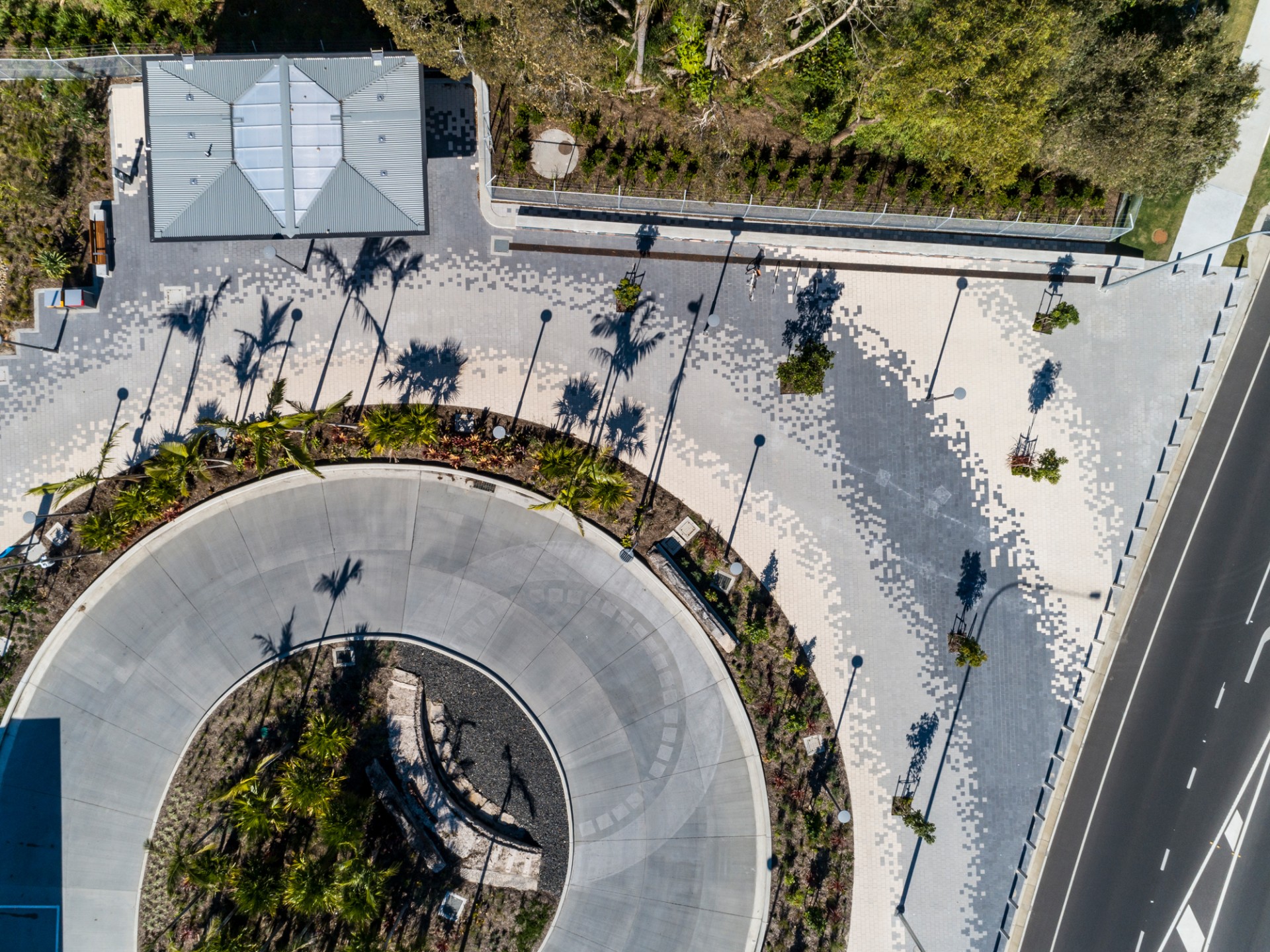
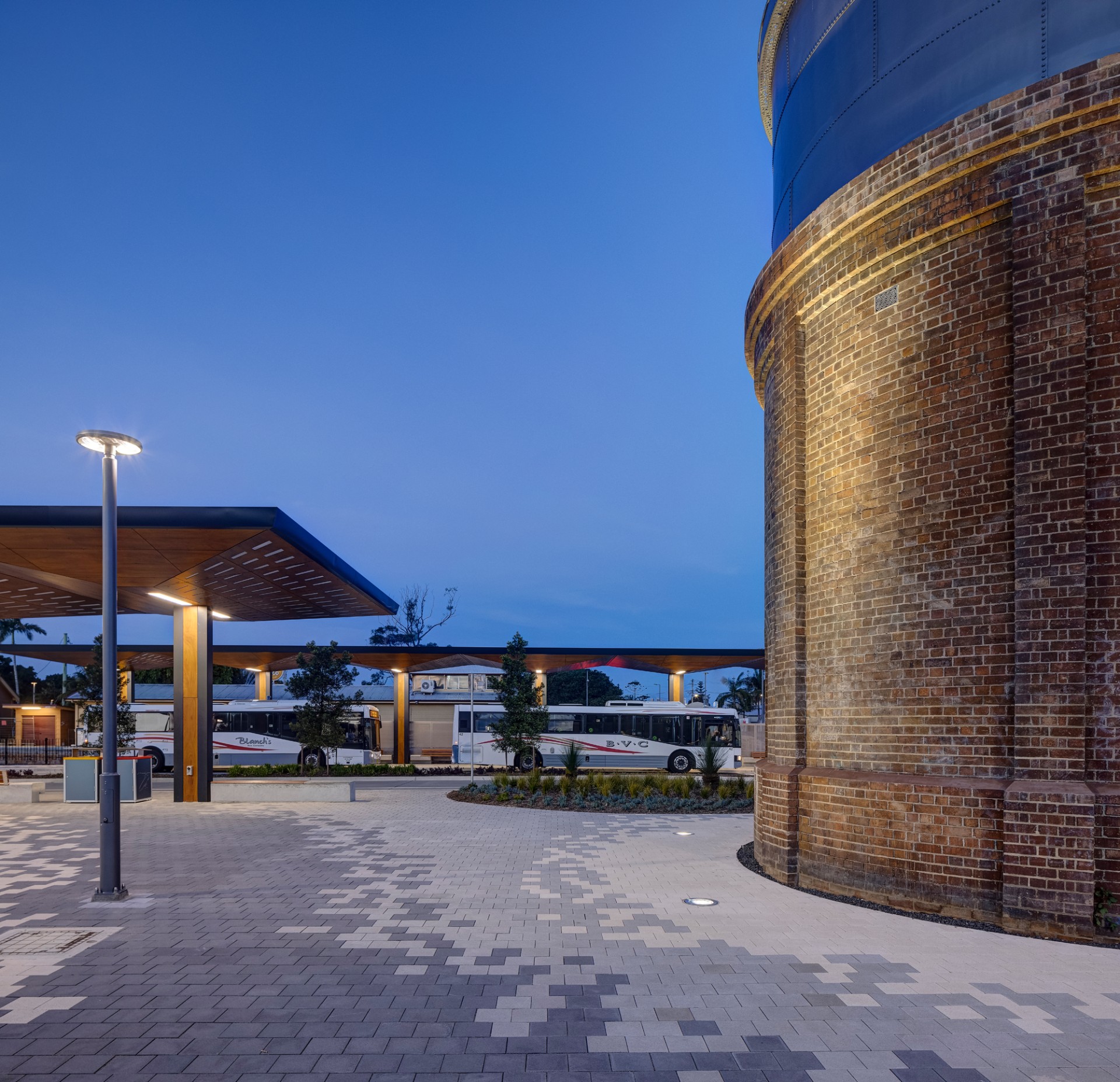
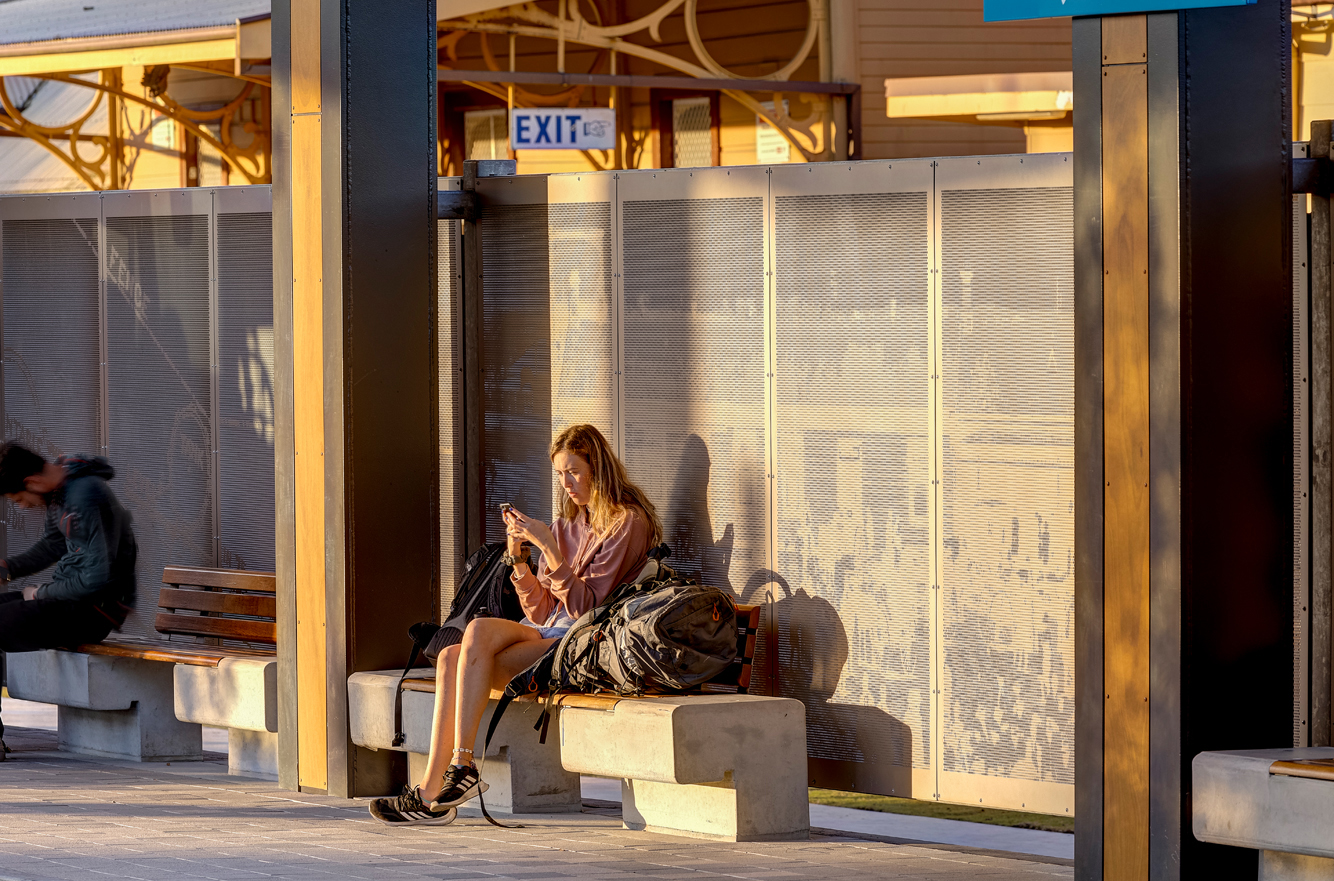
As well as your role as Associate in the Landscape team at DesignInc, I know you are involved with the Australian Institute of Landscape Architects. Can you tell me a bit about that?
I’ve been involved with AILA since 2017. When I returned from maternity leave with my second daughter, I realised I wanted to do something more to help the next generation of landscape architects. I also wanted to broaden my career and get more of sense of how the industry works, so I joined the National Practice Committee, which provides assistance to practices in how to align with the AILA Code of Conduct. Then in 2021 I joined the NSW Executive Committee. There was a push to include more women in leadership roles within AILA, so I put my hand up. The Executive Committee’s role is to advocate to ministerial bodies and the broader community about the importance of our profession to create great liveable and healthy cities that support a sustainable planet. We have a positive impact on projects, designing places for people and with natural systems
That’s important work.
It sure is! I’m also part of the Parents in Landscape Architecture Network (PLAN) Committee, which is for parents in the landscape architecture industry. We have developed a podcast series about various aspects of parenthood—check it out—and we also organise casual catch-ups with working parents in various roles about the challenges they face and ways that we can each support each other.
And most recently, I have taken on the role of Vice President of the NSW Chapter of AILA. It’s a two year position, which I’ve only just started. I’m really looking forward to it and seeing how I can support other landscape architects and broaden our reach.
How exciting! In addition to your roles at DesignInc and AILA, you also have three young girls. Can you tell me about how you manage all of these commitments?
Well, it’s busy! I have a very supportive and involved partner so every task is a shared responsibility, from taking carers leave, to making school lunches. We have three daughters ranging in age from ten years old to three years old, and each one needs a different level of attention. I’ve been at DesignInc for eight years, and they have been very supportive—our work environment is flexible, so I can usually shuffle my day around to attend school assembly or to pick them up from school occasionally.
I’ve noticed a lot of changes across the industry regarding parental leave, family commitments and flexibility over the last decade, and DesignInc has been at the forefront of this. The new paid parental leave policy was introduced just before my third child was born, so I benefited from extra paid leave, continued superannuation payments, support with childcare, and a smooth ‘return to work’ transition, which are all features of the policy. DesignInc is also very supportive of my AILA commitments.
The new paid parental leave policy was introduced just before my third child was born, so I benefited from extra paid leave, continued superannuation payments, support with childcare, and a smooth ‘return to work’ transition, which are all features of the policy.
Miriam Enoch, Associate
It’s still not easy though! The juggle for working parents is real. Sometimes it’s really difficult. But I love my career, and I love my family, so I don’t want to compromise on either of them. I am starting to see the positive impact that my professional role is having on my kids—recently one of my daughters did a school assignment about what’s so great about insects. She talked about the benefits that worms bring to the soil, and the importance of bees and other insects as pollinators. I was so proud of her interest in the environment!
Very impressive, you are instilling your values into the next generation. Thank you so much for sharing your story with me today Miriam, it’s inspiring!